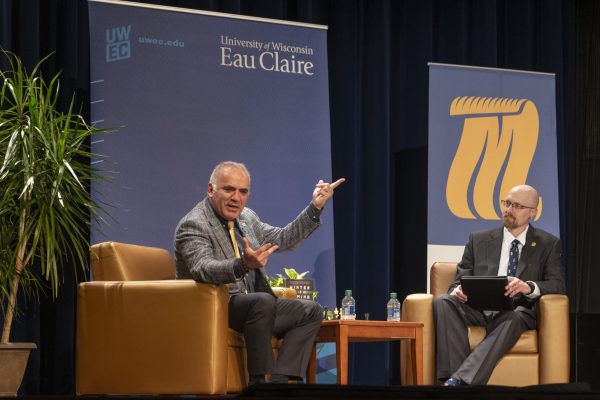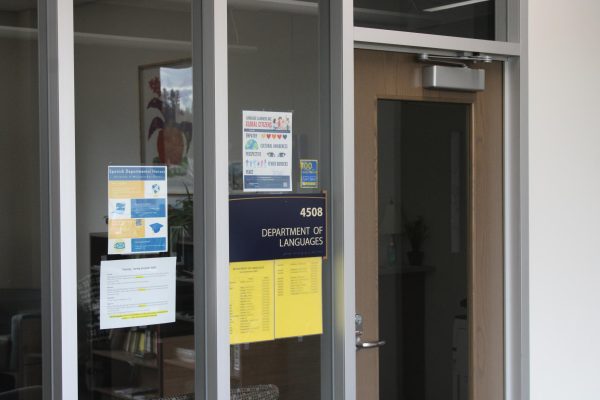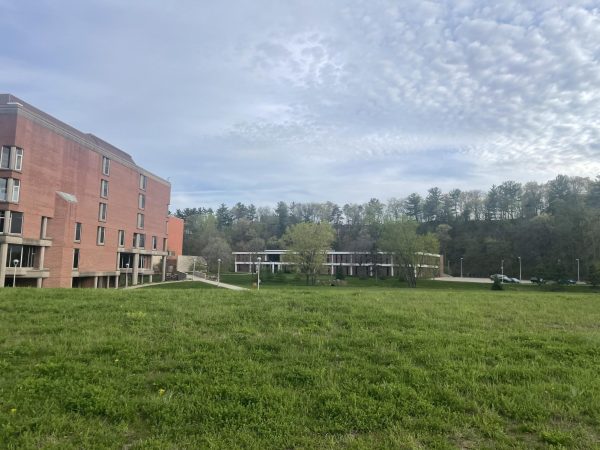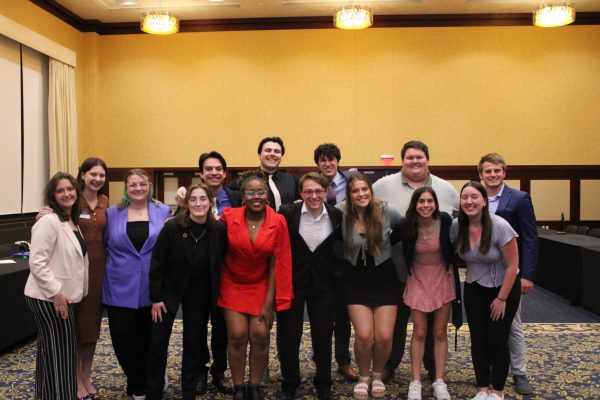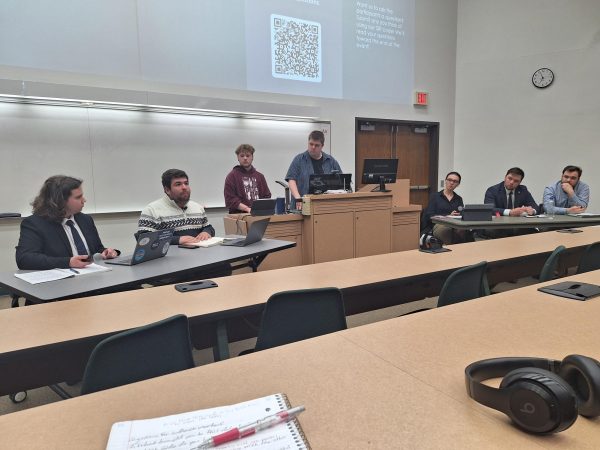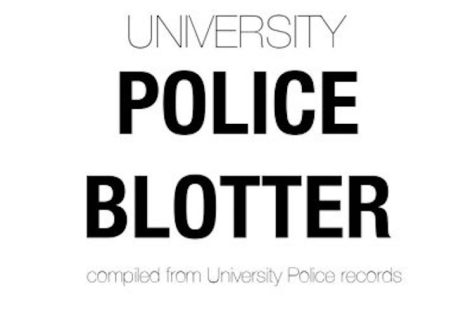Food insecurity evident among college students at UWEC
Lack of access to nutritional food makes it hard to be a college student
More stories from Emilee Wentland
Photo by Can Stock Photography
UW-Eau Claire students in need have access to the Campus Harvest Food Pantry with nothing more than their student I.D. and a signature.
When Ashley St. Aubin-Clark first stepped foot on the UW-Eau Claire campus, she had a bright vision for the years to come. Going to college had been her plan since she was young and she knew the years ahead would help her develop her skills as a teacher. What St. Aubin-Clark didn’t expect of her college experience, though, was qualifying for food stamps and regularly visiting a food pantry during her fourth and fifth years in school.
Last year St. Aubin-Clark, a secondary education student at UW-Eau Claire, took a position with Americorps at the Boys and Girls Club. Although the position was rewarding and beneficial to her future career as a teacher, it was technically a volunteer position and only offered her a living stipend rather than a wage. Because she wasn’t making any wages, she qualified for Wisconsin FoodShare assistance — formerly known as food stamps — which she said amounted to $129 a month.
“For one person, that was definitely meeting my needs,” St. Aubin-Clark said. “At the Boys and Girls Club, I was eating dinner with the kids every night through that program, so I was only having to cover breakfast, lunch and snacks.”
St. Aubin-Clark is one of nearly four million college students nationwide without reliable access to nutritious food, also known as food insecure, based on statistics from the National Center for Educational Statistics, a federal research entity about U.S. education. A study by the Wisconsin HOPE Lab — a UW-Madison college affordability research lab — found that anywhere from 20 to 22 percent of college students were food insecure and dealing with “disrupted eating patterns due to inability to access adequate food.” To get food, college students in Eau Claire have access to on-campus food pantries at UW-Eau Claire and Chippewa Valley Technical College.
A 2015 Wisconsin HOPE Lab study found that the number of college students living with food insecurity is nearly quadruple the national average of 14 percent. During St. Aubin-Clark’s time studying at UW-Eau Claire, she’s used FoodShare and the university’s on-campus food pantry. The Wisconsin FoodShare program assists residents in affording nutritional food by providing monthly allowances on a card. Any leftover funds each month are rolled over into the next month.
Like most students, St. Aubin-Clark lived in the dorms when she started college at UW-Eau Claire, so her room and meal plan were covered by her federal loans. When she was hungry, she would head over to the Riverview Cafe — commonly referred to by students as “The Caf” — to eat.
It was just before she started her fourth year in school when she accepted a position at AmeriCorps. For the first few months of the semester, she was volunteering at the Boys and Girls Club and working at a daycare in the mornings. After a while, working both jobs and going to school full time became overwhelming, so she quit the morning daycare job. Because she was only making the living stipend at the Boys and Girls Club, St. Aubin-Clark was forced to turn to the FoodShare program for help.
However, St. Aubin-Clark’s FoodShare card didn’t come until about two months after she initially applied, so during that time she was carefully budgeting her saved money from previous jobs to make sure she could buy groceries each week. By the time the card got to her, she had two month’s worth of grocery money on it that she hadn’t previously been able to use.
“From December to January, when I had no extra paychecks coming in from the daycare, it was difficult to balance, and I really had to stop and budget and think,” she said.
In 2017, nearly 16,000 people — or about 15 percent — in Eau Claire County received FoodShare assistance, according to the Wisconsin Department of Health Services. That puts Eau Claire County just below the state average of 16 percent, according to the state DHS.
Meeting needs elsewhere
Once St. Aubin-Clark’s year volunteering was up in August of 2018, so was her qualification for FoodShare. As the school year began, she turned to an alternative method of getting groceries: She started using UW-Eau Claire’s on-campus food pantry.
“It makes it easier,” she said about the Campus Harvest Food Pantry.
As of mid-October, St. Aubin-Clark said she hadn’t visited the grocery story yet, because a lot of her needs were being met through the campus food pantry.
The on-campus pantry served 456 students last year, said Julie Carr, the administrative supervisor for the pantry. This number shows a continued increase of students coming to the pantry for food from previous years.
The pantry isn’t meant to be a full-on grocery store, Carr said, but is instead meant to serve as a supplemental food source. The pantry gets food and other items from donations — of both money and food — and it purchases additional food from Feed My People food bank. The shelves are stocked with a variety of foods — including canned fruits and vegetables, frozen meat, pasta, cereal and snacks, among other grocery items.
“We have enough food here so a student could prepare a well-balanced meal,” Carr said. “… If you choose wisely — because (the students) come in and we let them choose what they want themselves — you could have enough food for two, three days.”
Students need to bring a student ID and sign a form to get food from the pantry. The form registers students for the food pantry; they only need to fill it out once while they’re enrolled at UW-Eau Claire. Students provide their name, address and year in school. The form asks students to check a box stating whether or not they need food from the pantry. The pantry doesn’t require students to provide proof of need.
Chippewa Valley Technical College has a food pantry similar to UW-Eau Claire’s that has been open since fall of 2014, said Aliesha Crowe, the executive director of CVTC Foundation, Inc. During the 2017-18 school year, there were 728 total visits to the pantry, 289 of those being unique — meaning it was the first time the students had visited.
Like the UW-Eau Claire food pantry, when CVTC students visit their pantry, they don’t have to give any data or private information. All they need, Crowe said, is their student ID.
“We ask for very little information because we want students to feel comfortable coming to the pantry and using it,” she said.
Student teaching full-time, unpaid job
At one point at the Campus Harvest Food Pantry, there was a group of three teaching education students who would come by the pantry each week (the limit for each student), Carr said. The reason for the weekly visits, she said, was partially due to their student teaching jobs. Because their placements were so far away, they had to spend a lot of their extra money on gas to get to their placements, Carr said. Therefore, they didn’t have as much money to buy groceries, so they visited the food pantry instead.
St. Aubin-Clark said she can relate.
As a student in her last year in the teaching education program, she is currently in her “block” semester. Block scheduling is a two-hour-long class for students in the education program. Next semester, she begins student teaching — a full-time, unpaid teaching job required for students in UW-Eau Claire’s education program. Students aren’t supposed to have a job outside of student teaching, St. Aubin-Clark said, so it’s common for students in the degree program to find alternative sources for food and income — such as food pantries and seeking assistance from family members.
Besides on-campus jobs, it’s hard to weave in extra work opportunities between classes, she said. A 2015 study in an academic journal, “Hunger on Campus,” found that 56 percent of the food insecure students surveyed were employed. Of those students, 78 percent were working anywhere from five to 29 hours per week.
On-campus employment is understanding of St. Aubin-Clark’s class schedule and exams, she said, so she can easily work around her school schedule. However, the Honors Program where she works only gave her five hours per week this semester. She makes up for the lack of hours with babysitting whenever she can.
“That’s a really hard way to have an income because it’s so infrequent,” she said about babysitting. “One week I worked about 25 hours babysitting and then the next week, I got zero hours.”
‘We’re all doing it, so it’s fine’
College students have normalized food insecurity, St. Aubin-Clark said, so some students probably don’t even realize they should be seeking help.
It’s common to talk about skipping meals and only eating inexpensive, unhealthy foods such as Maruchan brand ramen noodle soup. Each package retails for about 30 cents and contains about a third of the daily recommended amount of sodium. It’s easily made in the microwave or on the stove, which is why so many college students turn to it for their meals.
Part of the reason for this normalization and lack of using resources is the stigma around poverty and food insecurity, said Susie Haugley, communications specialist of Feed My People. Many people dealing with food insecurity keep it hidden because of the stigma, she said.
“It’s important for every student to know that they have a right to food and that there are resources for them,” Haugley said, “and without (regular access to food), it can affect graduation rates and their ability to achieve their highest potential in education.”
St. Aubin-Clark said she thinks more students in the education program can relate to her situation. However, they might be embarrassed to admit it or they’ve convinced themselves they’re “getting by.”
Thirty-two percent of food insecure students said hunger or housing problems had affected their education, according to the 2015 “Hunger on Campus” study. In fact, more than half of those students have either missed a class, missed a study session or decided not to join an extracurricular activity because of hunger or housing problems.
“(Students think) ‘We’re all doing it, so it’s fine,’” St. Aubin-Clark said. “But in reality, it’s not. If we all are just OK with it during this time period, all we’re going to eat is ramen — that’s not great for your body. If you’re not healthy, you’re not showing up for class. And if you’re not showing up for class, you’re not going to be a great teacher in the long run.”
Wentland can be reached at [email protected].


